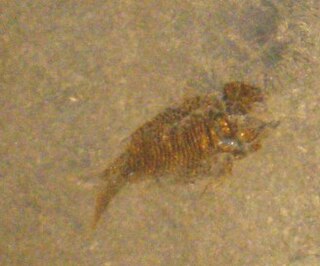
Rheidae is a family of flightless ratite birds which first appeared in the Paleocene. It is today represented by the sole living genus Rhea, but also contains several extinct genera.

The Apodiformes is an order, or taxonomic grouping, of birds which traditionally contained three living families—the Apodidae (swifts), the Hemiprocnidae (treeswifts), and the Trochilidae (hummingbirds); however, in the Sibley-Ahlquist taxonomy, this order is elevated to the superorder Apodimorphae, in which hummingbirds are separated into a new order, the Trochiliformes. With nearly 450 species identified to date, it is the most diverse order of birds after the Passeriformes.

The superorder Elopomorpha contains a variety of types of fishes that range from typical silvery-colored species, such as the tarpons and ladyfishes of the Elopiformes and the bonefishes of the Albuliformes, to the long and slender, smooth-bodied eels of the Anguilliformes. The one characteristic uniting this group of fishes is they all have leptocephalus larvae, which are unique to the Elopomorpha. No other fishes have this type of larvae.
Zeuchthiscus is a genus of prehistoric ray finned fish that lived in Australia during the Early Triassic Period. It is believed to have been a nektonic omnivore. Closely related fish had a wide distribution in the northern hemisphere.

The family Jeholodentidae is a possible eutriconodont family that was present in China around 125 million years ago during the time of the dinosaurs. There are currently two genera assigned to the family, Yanoconodon and Jeholodens.

Porolepiformes is an order of prehistoric lobe-finned fish which lived during the Devonian period. They are thought to represent the sister group to lungfish. The group contains two families: Holoptychiidae and Porolepididae.
Bolotridon is an extinct genus of epicynodontian cynodont. It was renamed from its original genus designation of Tribolodon, which was already occupied by a genus of cyprinid fish named in 1883 by Sauvage. The name Bolotridon was coined by Brian W. Coad in a 1977 publication as an anagram of Tribolodon.
Colobodectes is an extinct genus of dicynodont therapsid from the Tapinocephalus Assemblage Zone in the Abrahamskraal Formation, South Africa.
Cistecephaloides is an extinct genus of dicynodont therapsids of the Cistecephalus Assemblage Zone, Beaufort Group of South Africa.
Elatosaurus is an extinct genus of non-mammalian synapsid.
Palemydops is an extinct genus of non-mammalian synapsid.

Rhachiocephalus is an extinct genus of dicynodont therapsid.
Trichasaurus is an extinct genus of caseid synapsids.

Cercamoniinae is a subfamily within the extinct primate family Notharctidae primarily found in Europe, although a few genera have been found in North America and Africa.

Tarasiiformes is an extinct order of prehistoric ray-finned fish.
Peltopleuriformes is an extinct order of ray-finned fish.

Peltopleuridae were an extinct family of prehistoric bony fish. It is classified with the order Peltopleuriformes.

Procercocebus is a genus of prehistoric baboons closely resembling the forest dwelling mangabeys.

Birkeniiformes is an extinct order of jawless fish belonging to the class Anaspida.

Africanaspis is an extinct genus of groenlandaspidid placoderm known from two species, Africanaspis doryssa, named in 1997 from fossils discovered in South Africa and Africanaspis edmountaini, named from fossils described from South Africa during 2017. A. edmountaini is only known from juvenile specimens. Both species are known from the Witpoort Formation. A. doryssa reached 23 cm (9.1 in) long.












